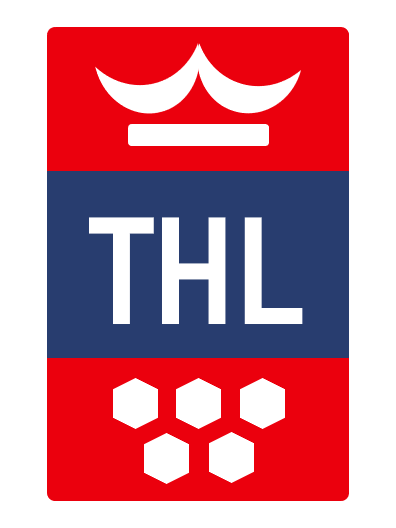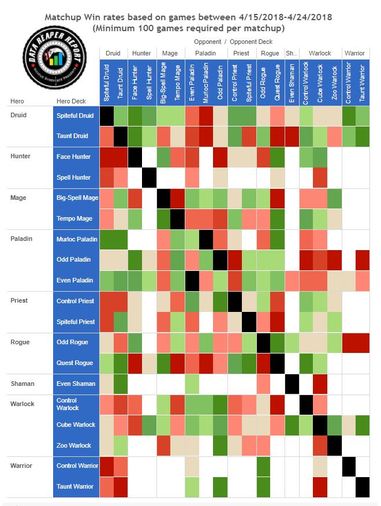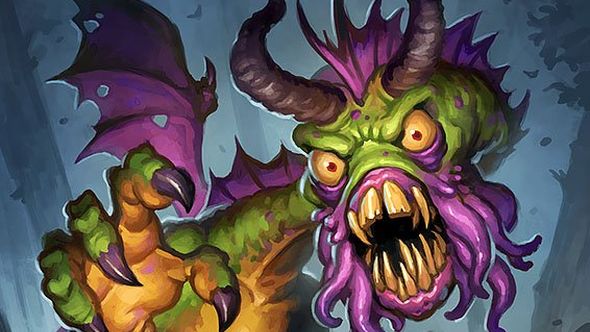|
Ragnaros League Meta Report: Witchwood Week 1 by MemyselfandI This last week saw the biggest period of innovation in tournament play since the release of The Witchwood. HCT’s Tour Stop in Taipei took place, and we got a glimpse into the open scene with NSG’s Brotherly Brawl in Philadelphia. How do these lineups used in the BO5 Conquest meta apply to the Ragnaros League format? Are certain strategies invalidated/enabled by class submission? Taipei saw a very polarized set of lineups: Tempo Mage, Odd Rogue, Face Hunter, and Murloc Paladin were used to hard-punish decks like Quest Rogue, Cubelock, and Control Mage. Others decided that enough anti-aggro would be enough to weather the storm, and we saw plenty of strategies employing Control Mage, Warrior, Warlock, and Priest. Surprisingly, Control Priest fell to the wayside somewhat, splitting focus with Warrior and Mage. Despite its relatively low skill cap, Spiteful Druid was still brought generously in both tournaments. It has only one true counter class in Paladin, and Appa ended up winning the Brotherly Brawl with a thoroughly standard lineup including Spiteful Druid. WARLOCK: Coming out of the gates, Cubelock seemed like a clear contender in the Witchwood meta. Though the loss of Mistress of Mixtures may have crippled some of its aggressive matchups, the deck is still very much a powerhouse with only a few counters. With phenomenally better winrates vs Face Hunter and Quest Rogue, Zoo Warlock serves as a check on any lineup trying to target the Warlock class (though its bad matchup against Odd Rogue should be noted). One other thing the Warlock class lacks is a way to punish slower decks like Control Priest. With enough hate surrounding the class, Warlock may have to settle for either even matchups, or coin-flip scenarios with Control/Tempo Mage and Odd/Quest Rogue. With roughly 50% matchups serving as Warlock’s worst-case scenario, the class should be an auto-bring unless you want to go for a hyper-aggressive lineup or another all-in strategy. PALADIN: Murloc Paladin, after the initial hype surrounding Even/Odd Paladin died down, emerged as one of the premiere aggressive decks of the Witchwood Meta. It obsoletes Odd Paladin except in its drastically worse matchups against Odd Rogue, Even Shaman, and interestingly, against each other. Odd Paladin, while it may have fallen out of the spotlight, is still very much a threat. These two should go hand-in-hand when deciding on which Paladin deck to bring, and if your opponent isn’t bringing Druid or Priest, consider banning Warlock and switching over to the dudes. Even Paladin can shore up Murloc Paladin’s weaknesses in Odd Rogue/Odd Paladin without sacrificing matchups against Cubelock, Zoo, or Control Warrior variants. The deck is very well-rounded, and can be teched a number of ways to better suit your opponent’s lineup. Though the Conquest format may end up favoring the other two variants of Paladin, Even Paladin is a flexible and extremely powerful deck (and it also dodges Hungry Crabs, importantly). One thing to note is that going onto Even Paladin will ruin your chances against Control Priest. Wild Pyromancer doesn’t quite get the job done vs Murlocs, and that matchup is almost 50/50. On the Whole, Paladin should be an auto-bring class (barring an all-in strategy), as it fits into several lineups extremely well. What are basically 3 variants of Aggro Paladin can go up against almost any combination of opposing classes with a >50% winrate, and the class is exceedingly hard to punish. ROGUE: Rogue is a class that’s affected by THL’s format in a really interesting way. Historically, Rogue has been a class that was punishable by aggressive decks, and being able to see that your opponent would bring Rogue rendered it unusable. Then the juggernaut of Tempo Rogue came out to play during KFT, but as Rogue’s only viable option, the class performed well but not spectacularly at the hands of Aggro Druid and Zoo. Now, Rogue has two archetypes that protect each other’s bad matchups in Odd Rogue and Quest Rogue. Except for Paladin, the two decks have matchups that almost mirror each other, and opponents won’t be able to safely target one deck without opening themselves up to the other. Odd Rogue is a relatively well-rounded aggro deck that can beat Murloc Paladin consistently (!), but is very weak against the four control decks we’re seeing a lot of: its best control matchup is Cubelock, which is even to slightly favored for the Rogue. Quest Rogue will beat those control decks, but not much else. Its saving grace is an unconditional favored matchup into the Druid and Priest classes, but most other classes can flex to punish it. The Rogue class enjoys coinflip scenarios against Mage, Warlock, and other Rogues. Since the class can perform almost any role you want it to (even effective anti-aggro in Odd Rogue), this will undoubtedly be the source of a lot of frustration throughout the season. The class should be brought with a good plan in mind (and some facility on Quest Rogue, should your opponent try and bring Warrior). All I can say is I hope Caverns Below gets nerfed again, as to put us out of our Rock/Paper/Scissors misery. PRIEST: After initial experimentation with Spiteful Priest, Control Priest emerged as the best performing Priest deck of the expansion. With good matchups vs both Paladin and Warlock (a trait pretty much unique to Control Priest), it’s an extremely effective way to ‘game’ the status quo lineup we see more in blind formats. It, too, has polarized matchups against the two Rogue variants, though it does sport a good winrate vs. Odd Rogue. It’s very hard to find a situation where Control Priest doesn’t end up with two or more even/favored matchups, and good pilots of the deck should feel very comfortable picking up the class. Especially alongside Paladin and a Rogue of your own, forcing your opponent’s Rogue onto Odd Rogue will mean basically a free win for your Control Priest. Spiteful Priest does have its advantages over Control. As with K&C, its better matchup vs. Tempo Mage is is a big factor when deciding on which Priest deck to bring. It also performs much better against Control and Quest Warrior variants. However, worse matchups vs. both Odd Rogue and Paladin means the deck’s weaknesses can’t be banned away. And both decks have one glaring weakness, which may demote it to in-and-out status as the THL pocket meta ebbs and flows: A cripplingly bad matchup vs. Druid. DRUID: With almost no help from The Witchwood, Spiteful Druid has managed to leap into Tier 1 in ladder play. With very well-rounded matchups, a simple playstyle, and plenty of room for tech options, the deck is a great choice for ranking up. However, tournament play (especially THL’s) is less nice to it. With only one option for your Druid deck, your opponent will know that you’re playing Spiteful Druid going into the match. Luckily for Druid, its matchup spread is so good that you can often get away with >50% matchups, even if your opponent prepares and techs specifically for it. Since a Paladin ban pairs well with many other strategies, Spiteful Druid can often provide an extremely effective “fourth deck filler” that can slot into any kind of counter-strategy. It can be teched to combat Cubelock more effectively, or you can stick with its standard build for very effective anti-aggro. Along with Paladin, Rogue, and Warlock, opponents might be scared off of Murloc Paladin, and you could get away with banning a different class while maintaining Spiteful Druid’s even to favored matchups. With thoroughly solid matchups all-around, Druid should be a priority pick in this Week 1 meta. Only time will tell how it will fare as the THL meta (and the overall Hearthstone meta) shifts around. MAGE: Mage, like Rogue, sports 2 almost completely opposite archetypes in Tempo Mage and Control Mage. While Rogue was universally weak against Even and Odd Paladin, both Mage decks will struggle against Spiteful Druid. The rest, of course, is left to coin flips. Unlike K&C, Zoo Warlock has retained enough early-game power in rotation to withstand Tempo Mage’s direct damage onslaught, and the deck is no longer a universal Warlock counter. Control Mage is favored vs. every kind of Paladin, but will fold to Cubelock. Control Priest is one place where the class can shine, as Tempo Mage enjoys a favorable matchup while Big Spell Mage goes roughly even against it. Apart from that though, the Mage class pretty much has to be used in a specific counter lineup, or if you’re particularly confident in your RPS skills. Trying to fit the class into a well-rounded lineup will too often end up in one good matchup and two bad matchups, which leaves Mage a slave to queue order in the Conquest format. Not hitting Paladin with your Control Mage may leave it stranded, and Tempo Mage needs to find Control Priest or Warlock to be successful. If you bring Mage, you better have a great plan to back it up. WARRIOR: For all its intricacies and strategy, we sometimes see a class which is brimming with potential in blind play completely invalidated by class submission. Such is the case with Warrior in The Witchwood. While Quest Warrior is one of the best anti-aggro decks on ladder right now, too many classes can flex to completely demolish it. Awful matchups vs. Spiteful Druid, Spiteful Priest, Quest Rogue, Cubelock, and Tempo Mage mean that 2/3 of your opponent’s lineup will usually have a good time against your Warrior, even if you ban Warlock away from your opponent. Forcing your opponent onto Zoo and Odd Rogue by playing Mage and Hunter could mean good things for Quest Warrior, but for the most part I see little reason to bring it over a less restrictive deck. Its potential in THL lies in its great matchups vs. Paladin. It could serve as an effective anti-Paladin tool, should that all-in strategy become more popular. Switching over to Odd Warrior yields similarly grim results. Though your matchups against Tempo Mage and Face Hunter are a bit better, you lose most of your best tools against Murloc Paladin, and Control Warlocks running Rin will crush your dreams (as they undoubtedly will after seeing Warrior). What was a passable matchup against Cubelock in blind formats has been soured by class submission. I would love to be proven wrong, but my prediction is that those attempting to make Warrior work in THL will be met with a rude awakening. HUNTER: Though one of the very worst decks on ladder, Baku Hunter has seen a lot of blind format play. Its more consistent counterpart, Spell Hunter, proved too mild for tournament play and was dropped in favor of the more polarized Face Hunter. Face Hunter does exactly 3 things, really well: It beats Quest Rogue, Control Mage, and Cubelock. It also does many other things really badly, including but not limited to: beating Odd Rogue, Tempo Mage, and Zoo Warlock. Sadly, like Warrior, THL has rendered Face Hunter completely useless. Even trying to hard-counter the aggressive decks your opponent will bring to beat Face Hunter will yield unfavorable winrates on the whole. Spell Hunter, however, unlike in blind formats, has a bit of merit in THL. It performs well against Mages and Rogues of all types. Especially if your opponent feels pressured to bring Tempo Mage, Spell Hunter can often find itself with 2 favorable matchups out of 3 in your opponent’s lineup. It also does exceedingly well against Zoo (a Face Hunter counter your opponent might get baited into bringing), and can perform passably against Control Priest. If you have reason to believe that your opponent will bring Mage, consider bringing Spell Hunter to eliminate some of the coinflips surrounding Mage/Rogue. Another perk of Spell Hunter is that, save its matchup vs. Paladin, it’s actually a pretty effective anti-aggro deck. Combining it with Spiteful Druid, Even Shaman, Odd Rogue, or Even Paladin with a Paladin Ban makes a formidable lineup that can gang up on opposing Zoos and Tempo Mages. Maybe a bit dreamy, but I see some hope for the Hunter class in THL. SHAMAN: After much trial and failure, Even Shaman has risen up as Shaman’s champion in The Witchwood. With explosive early turns that take over the board faster than other minion-based decks, Even Shaman is one of the most effective anti-aggro decks in the game. It’s the single best deck against the Rogue class, demolishes Tempo Mage, and is significantly favored vs. Zoo Warlock. It also, most importantly, is favored vs every Paladin archetype except for Odd Paladin. This comes at the cost of pretty much every slow matchup it has. Cubelock is a nightmare for it to deal with, Control Priest crushes it, and Big Spell Mage is an awful matchup too. It goes roughly even against Spiteful Druid, but that’s pretty much the only even matchup it has. Make no mistake, Even Shaman is an extremely niche deck. Especially with knowledge of your opponent’s classes, the deck can be countered hard by slow, reactive control decks. But not without a small caveat… I hope you enjoyed reading. All matchup data was drawn from HSReplay and ViciousSyndicate. Decklists for the Top 16 players at HCT Taipei can be found here:
http://www.kilkku.com/oldguardian/2018/04/hearthstone-hct-taipei-april-2018-tour-stop-decks-results-and-analysis/ -MemyselfandI
0 Comments
Leave a Reply. |
AuthorThe THL blog is curated and edited by THL's Content Managers. All THL members are welcomed and encouraged to pitch ideas for articles they would like to see on the site. If you have an idea, please reach out to LotusKnight on Discord or via the THL Help email address: [email protected] Archives
December 2023
Categories
All
|
This website is not affiliated with Blizzard Entertainment.
Icons made by Freepik & Smashicons from www.flaticon.com is licensed by CC 3.0 BY
Icons made by Freepik & Smashicons from www.flaticon.com is licensed by CC 3.0 BY



 RSS Feed
RSS Feed